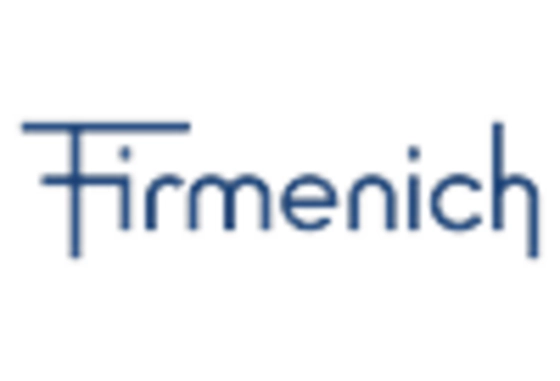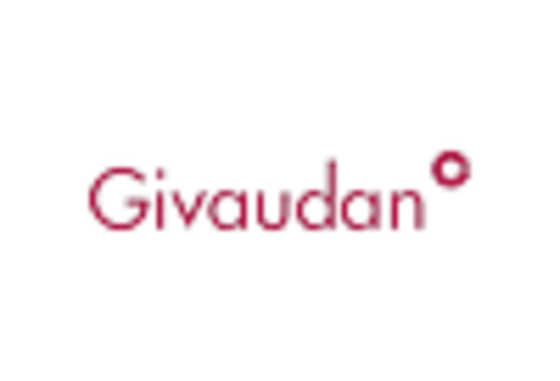Increasing Demand for Natural Flavors
The Vanillin Market is experiencing a notable shift towards natural flavors, driven by consumer preferences for clean label products. As health-conscious consumers become more aware of artificial additives, the demand for natural vanillin derived from sources such as vanilla beans is on the rise. This trend is reflected in market data, indicating that the natural vanillin segment is projected to grow at a compound annual growth rate of approximately 8% over the next five years. Manufacturers are responding by investing in sustainable sourcing and production methods, which not only cater to consumer preferences but also enhance brand loyalty. The increasing demand for natural flavors is likely to reshape the competitive landscape of the Vanillin Market, pushing companies to innovate and adapt their product offerings.
Rising Popularity of Gourmet Products
The Vanillin Market is witnessing a surge in the popularity of gourmet and artisanal products. Consumers are increasingly seeking unique and high-quality flavor experiences, which has led to a rise in demand for premium vanillin products. This trend is particularly pronounced in the bakery, confectionery, and beverage sectors, where gourmet offerings are becoming more prevalent. Market data indicates that the gourmet food segment is projected to grow at a rate of 6% annually, further driving the need for high-quality vanillin. As a result, manufacturers are focusing on developing innovative vanillin formulations that cater to the gourmet market, thereby enhancing their product portfolios. This shift towards gourmet products is likely to create new avenues for growth within the Vanillin Market, as companies strive to meet evolving consumer preferences.
Technological Advancements in Production
The Vanillin Market is benefiting from technological advancements in production processes. Innovations in extraction and synthesis methods are enabling manufacturers to produce vanillin more efficiently and sustainably. For instance, biotechnological approaches, such as fermentation, are gaining traction as they offer a more environmentally friendly alternative to traditional methods. Market data suggests that the adoption of these technologies could reduce production costs by up to 20%, thereby enhancing profitability for producers. Furthermore, advancements in quality control and product consistency are likely to improve overall market competitiveness. As these technologies continue to evolve, they may redefine production standards within the Vanillin Market, allowing companies to meet increasing consumer demands for quality and sustainability.
Expansion of the Food and Beverage Sector
The Vanillin Market is significantly influenced by the expansion of the food and beverage sector. As the global population continues to grow, the demand for processed foods, beverages, and confectionery products is escalating. Market data suggests that the food and beverage industry is expected to reach a valuation of over 10 trillion dollars by 2026, creating substantial opportunities for vanillin producers. This growth is particularly evident in emerging markets, where rising disposable incomes and changing dietary habits are driving consumption. Consequently, the Vanillin Market is poised to benefit from this expansion, as manufacturers seek to enhance flavor profiles and improve product quality. The synergy between food innovation and vanillin applications is likely to foster a robust growth trajectory for the industry.
Growing Applications in Personal Care Products
The Vanillin Market is experiencing growth due to its expanding applications in personal care products. As consumers increasingly prioritize sensory experiences in their daily routines, vanillin is being incorporated into a variety of personal care items, including fragrances, lotions, and soaps. This trend is supported by market data indicating that The Vanillin is projected to exceed 500 billion dollars by 2027, creating new opportunities for vanillin suppliers. The unique aromatic properties of vanillin not only enhance product appeal but also contribute to the overall consumer experience. As the personal care sector continues to evolve, the Vanillin Market is likely to see increased demand, prompting manufacturers to explore innovative formulations that leverage vanillin's desirable characteristics.

















Leave a Comment